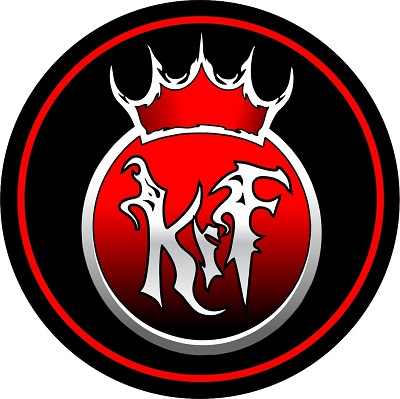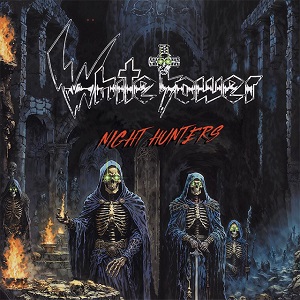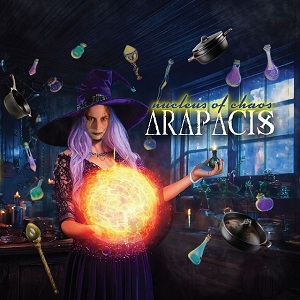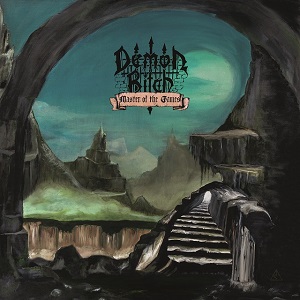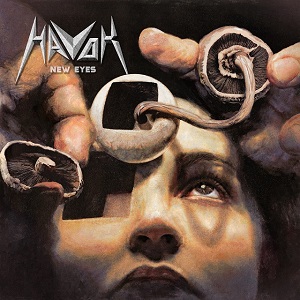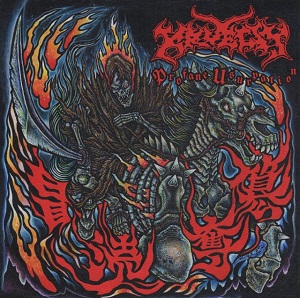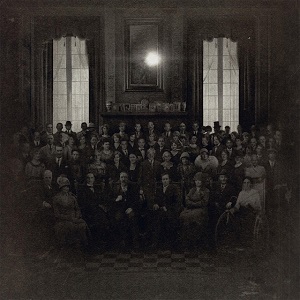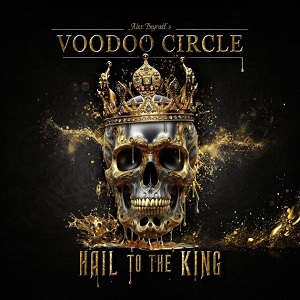10 Best RUSH Songs You Can Dance To
May 9, 2023, a year ago
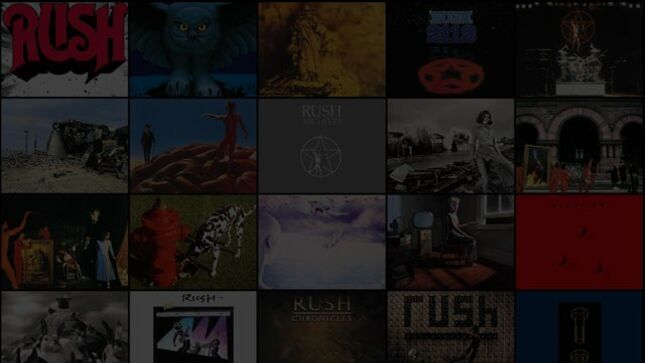
By Dama Gil
The story of the mighty Rush could and has been the subject of many books. Since its inception in 1968 - and over the course of the next four decades - the Canadian powerhouse trio defied trends and captivated audiences and listeners with their own intoxicating blend of astounding prog-rock, hard rock and almost everything in between.
There is something for everybody at the Rush smorgasbord. As the band progressed traveled through their musical evolution, they embraced a pop, synth-laden era that started with “Signals” and ended with “Hold Your Fire”, after which the trio would swerve into more guitar-based popular rock music with touches of their previous progressive elements, and then onto injecting alternative rock into the mix starting with “Counterparts.”
Despite this departure from their traditional progressive sound was massively polarizing, dismissed, and even hated by many die-hard fans, the ‘pop commands prog' period of Rush left us with many gems, and today take a peek at the top 10 tracks that could be filed under dance-able (by Rush standards). Never thought of putting together such a list? No worries, just keep reading.
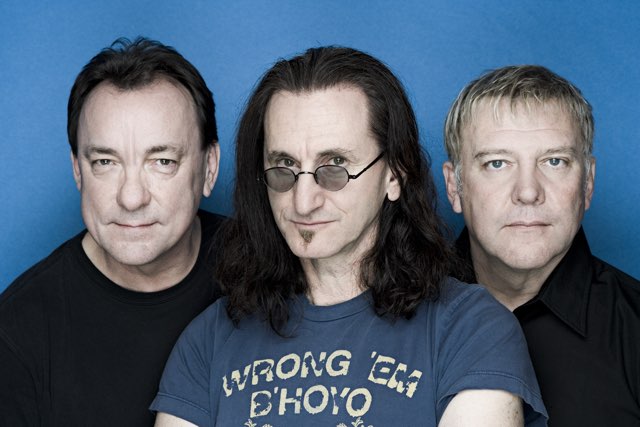
“The Weapon” (Part II of the "Fear" trilogy)
The "Signals" album saw our favorite Canadian trio beginning to experiment with keys, a pattern that will take the forefront of the band’s sound in the following years. Rush decided to migrate towards more “modern” genres of new wave, reggae, ska, and synth-driven pop music played by bassist/vocalist Geddy Lee, which meant that Alex Lifeson’s guitar was sometimes sacrificed. When the album was ultimately released, many of the devoted followers who grew up with Rush's iconic sound were somewhat let down. “Signals”, however, keeps a rock edge flavored in many sub-genres, which makes it distinctive and intriguing to listen to.
“The Weapon” is the 5th song in the album. It is a good song musically, with some sequenced elements, and a remarkable melodic intro, built on a dance music drum pattern. The track completes Peart's disjointed "Fear" triptych. The track verses about the nuclear armaments competition during the Cold War. The third sentence of President Franklin Delano Roosevelt's First Inaugural Address, delivered on March 4, 1933, is the source of the song's opening line, "We've got nothing to fear...but fear itself?"... "So first of all let me assert my firm belief that the only thing we have to fear. . .is fear itself. . . nameless, unreasoning, unjustified terror which paralyzes needed efforts to convert retreat into advance." When it comes to pure enjoyment and ease of repeat, this cut stands tall among the great.
“Scars”
For all the musical complexity that Rush has shown over the years, it was absolutely amazing how much they could do with simplicity, and that was visible in spades in “Presto”, their 13th studio album, where they slowly started inching back to a return to a rockier sound, with Alex’s guitar back at the forefront. The album 5th track, “Scars” has an interesting synth/percussion intro, followed by a deep and mesmerizing drum rhythm – deeply infused in some hypnotic African dance beats – sprinkled with vastly processed bursts of stratospheric guitar and leads, topped off with an atmospheric vibe. A ballsy excursion by Rush standards at the time, its haunting melodies, thought-provoking lyrics and emotional depth make it an impressive listening experience, one that will stay with you long after the song has ended.
“New World Man”
Again from “Signals”, "New World Man" brings us back to the reggae influence, fused nicely with solid, new wave rock beats. The track, which was the last and quickest to be written on the album, was inspired by Rush's then-producer Terry Brown's idea to balance the durations of the two sides of the cassette version. As a matter of fact, it was written and recorded on the same day. "New World Man" is by far their highest-charting song to date and their sole Canadian No. 1. It was the only song by Rush to reach the Top 40 in America. With its unforgettable melodies and enticing hooks, it is undoubtedly a fan favorite. Over time, the song has been included in a lot of live performances.
“The Enemy Within” (Part I of the "Fear" trilogy)
“The Enemy Within” ends the first side of the album "Grace Under Pressure" which is Rush's 10th album; and is the first part of the "Fear" trilogy, which were released in reverse order, meaning that the trilogy began with "Witch Hunt" on “Moving Pictures” and continued with "The Weapon" on Signals. The song explores how people's own concerns influence their choices. The "Enemy" perhaps alludes to oneself darker side, to the phobias that we must contend with. It is a fast-paced catchy tune that anyone can appreciate, and Geddy Lee's vocals do an exceptional job to convey the inner torment behind the lyrics. "Grace Under Pressure" ought to be one of the first albums brought up when talking about the most unusual or innovative Rush records. It offers an intriguing journey into the band's darker side and a more grounded approach to both their songwriting and their music, even though it doesn't sound anything like its predecessors.
“Roll The Bones”
"Roll the Bones" was released as the second single from their 1991 album of the same name. It is considered by many a "rap" song which perfectly fits the band's natural creative growth at the time. The song's lyrics are about taking chances in life and exhort individuals who are unsure to "roll the bones," a dice-throwing expression. The track has a pleasing introduction and uses triggered sounds and keyboard effects throughout. It's a funky effort from a band that wasn’t normally funky. Geddy's bass playing and vocal performance is excellent and groovy, Lifeson’s solo combines electric and acoustic instruments, and “The Professor” drum rhythms are masterful, to put it mildly. Rush gave the middle rap portion a lot of attention and even considered using John Cleese's British accent. Lee ultimately delivered the "rap" by drastically reducing the pitch of his voice and applying other effects. At the end, the rap is what makes the song a tad more special. He really did pull it off.
“Leave That Thing Alone”
The outstanding instrumental track from the "Counterparts" album starts out with a really light-hearted guitar riff, followed by some very funky bass. The synths are simple, yet ethereal. Neil's drumming is superb, Lifeson's guitar chords are fluid, and full of emotion. Geddy's funkalicious bass lines, really take the cake, driving the danceable-feeling. He truly takes control of it and gives the song so much texture. The track's soloing by Lifeson is excellent and clearly displays his mastery of guitar effects. “Leave That Thing Alone” was a thematic sequel to “Where’s My Thing?” and was nominated for a Grammy in the category of Best Rock Instrumental Performance in 1994. This piece is among Rush's best instrumentals.
“In the Mood”
Back in 1974, after playing countless small venues throughout Canada, the power-trio finally broke into the U.S. recording market with their self-titled album. The record is a collection of 8 tracks that revealed something unique, exceptional, and unexpected. At this time, Rush consisted on Geddy Lee on bass and vocals, Alex Lifeson on Guitar and John Rutsey on the drums. Rutsey would leave the band following the release of this album due to health concerns and other personal difficulties, with Neal Peart serving as his replacement. Except for "In the Mood," which Lee had originally written in 1971, all eight of the tracks were co-authored by Lee and Lifeson.
"In The Mood" is the second song of the second side of the album. With a smoother groove, fantastic guitar and percussion work, and a joyful, uplifting sound that leans more towards pop/rock, it was published as a single and is sure to get your feet tapping. From the band's beginnings until the “Roll the Bones” Tour in 1992, when it was officially dropped, it became a staple of their live performances.
The track was played by the St. Louis Classic rock radio station KSHE each night at 7:45 due to the line “hey baby, it’s a quarter to eight, I feel I’m in the mood…”
“The Big Money”
One of Rush's most technologically advanced albums to date is “Power Windows.” The strong synth sounds are still present, but they are now more melodically incorporated with the guitar, bass, and percussion. This album's theme, written by lyricist Neil Peart, is corruption, money, power, and politics. "The Big Money" peaked at number 45 on the Billboard Hot 100 and number 4 on the Mainstream Rock chart. It has since appeared on a number of compilation albums, become a concert crowd favorite, and been played live on most of their later tours. It is an upbeat, quick-paced song with the ideal balance of guitar, synths, and percussions that gives Geddy Lee the chance to display his soprano singing. Since it's the first track on the album, it opens it with a blast of synthesizer chords and Alex Lifeson's guitar solo, which combines chords and fast-paced lines.
“Kid Gloves”
“Grace Under Pressure”'s first half explored some substantial lyrical concerns while including thoughtful music. The second half was a more upbeat voyage, however, offers a good contrast with its breezier refrains, which employ a progressive rock and pop feel. The underappreciated gem "Kid Gloves" is the second song of the album's second half. The track shows how committed the group was to keeping the distinct Rush core while broadening their overall sound. They were eclectically ambitious, but they didn't lose sight of the importance of writing solid, hard rocking songs. This song's beautiful melody moves through sections that experiment with time and pace while incorporating Lifeson's well-textured, staccato guitar riff, the gorgeous synth, and some oddly timed rudiments.
“Everyday Glory”
"Everyday Glory" is a classic example of Rush triumphalism. Big and bright with a sturdy rhythm, it conveys a spirit of triumph: an optimistic tune that showcases strong lyrics over flashy riffs, and sports what’s likely one of the best guitar solos of the record. Definitely an emotional track, it closes “Counterparts”, which many considered their best album of the 1990s, and what would have been Rush's best late period album if “Clockwork Angels” didn't come nineteen years later. Interesting fact: Despite some early negative reviews by critics and fans, “Counterparts” is one of Rush's two highest-charting albums in the United States; reaching No. 2 in the United States, and No. 6 in Canada.

